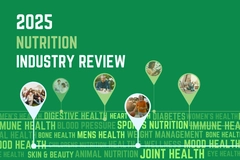
- Industry news
Industry news
- Category news
- Reports
- Key trends
- Multimedia
Multimedia
- Journal
- Events
- Suppliers
Suppliers
- Home
- Industry news
Industry news
- Category news
- Reports
- Key trends
- Multimedia
Multimedia
- Events
- Suppliers
Suppliers
Infant health deteriorated during the 2022 formula shortage, new study finds

11 Mar 2024 --- The 2022 baby formula shortage in the US caused an estimated 81% of parents to switch formula. According to a new study conducted by experts of the University of California, Davis, Yale University and the New York Langone Medical Center, US, this change resulted in a number of adverse health effects for many of the country’s infants.
“Sixty-one percent of parents who switched formulas reported that their infants experienced ‘any’ (one or more) problem in response to switching,” Jennifer Smilowitz, Ph.D., co-author and assistant professor at the department of nutrition, University of California, Davis, tells Nutrition Insight.
“These problems included fussiness, gas, spit-up, constipation, diarrhea, eczema, vomiting, mucus, allergy and fever. We conducted a sub-analysis and found that more infants requiring specialty formulas experienced problems than infants who did not require specialty formulas. For example, 76% of infants who required specialty formulas experienced ‘any’ problem compared with 56% of infants who did not require specialty formulas.”
 Infants in the US experienced adverse health outcomes such as fussiness, gas, spit-up and constipation during the infant formula shortage.Formula recall
Infants in the US experienced adverse health outcomes such as fussiness, gas, spit-up and constipation during the infant formula shortage.Formula recall
The study published in Nutrients presents a cross-sectional analysis of the infant diet, outcomes, consumer behavior and parental perspectives to optimize infant feeding in response to the 2022 US infant formula shortage.
“The recall by Abbott Nutrition exacerbated a chronic infant formula shortage caused by supply chain disruptions related to the COVID-19 pandemic,” Smilowitz details.
“One way Abbott’s recall impacted the severity of the formula shortage was through the closure of a manufacturing plant in Michigan that was found to be connected to the bacterial contamination from Cronobacter sakazaki. This manufacturing facility is the country’s largest infant formula manufacturing plant, providing about 20% of the infant formula in the US.”
“Another way the recall impacted the severity of the formula shortage was through the mechanism more than 50% of families in the US use to obtain formula,” she continues. Smilowitz explains that Women, Infants, and Children (WIC) recipients receive formula from one of these manufacturers designated by their state.
“Participants of the Special Supplemental Nutrition Program for WIC), a federally funded program that provides resources including access to infant formula to low-income pregnant and postpartum women, infants and children, requires that WIC agencies competitively bid for contracts from three US infant formula manufacturers for the least expensive contract,” Smilowitz reveals.
“In 2022, Abbott Nutrition dominated WIC contracts, and the recall put the lives of millions of infants at risk.”
Common challenges
Pointing to an earlier study she co-authored, which surveyed parents from low-income communities, Smilowitz stated that the most common challenge faced by parents was accessing safe sources of food for their infants.
“For example, the number of individuals that used at least one unsafe feeding practice increased from 8% before the formula shortage to nearly 50% during the shortage. Unsafe practices included watering down formula, using expired or homemade formula, or using human milk from informal sharing.”
“In the current study, the most common challenges we identified were related to the burden of time, funds and the stress involved in obtaining formula,” she highlights. “For example, 30% of parents switched formulas three to five times during the shortage, visited more than four stores in a 24-hour period to find infant formula and traveled more than 20 miles (32 km) in a 24-hour period to purchase formula.”
Smilowitz says the research team synthesized parents’ stress descriptions from their own words regarding the formula shortage and created a word cloud to visually represent their experiences and coping mechanisms.
“The increased reliance on unsafe infant feeding practices due to the infant formula shortage, as found in our first study, may have some short- and long-term health implications,” she stresses.
“In the short-term, relying on human milk from informal sharing rather than through a pasteurized donor milk bank has health and safety risks from exposures to medications, illicit drugs, infectious diseases or alterations. In the long-term, diluting formula with water can impair growth and development and result in electrolyte and mineral disturbances, seizures and even death.”
 During the shortage the number of parents who used at least one unsafe feeding practice increased from 8% before the formula shortage to nearly 50%.Bolstering breastfeeding
During the shortage the number of parents who used at least one unsafe feeding practice increased from 8% before the formula shortage to nearly 50%.Bolstering breastfeeding
Another interesting aspect of the latest study’s findings highlighted by Smilowitz is that while mothers expressed the desire to breastfeed during this period, this was not always possible. “It’s astonishing that 80.5% of female parents in this study planned to exclusively breastfeed their infants. However, 87% did not meet their goals.”
“Breastfeeding is a human right for both the lactating parent and their infant and a reproductive right for women,” she asserts. “Human milk is the optimal food for infants, and the national recommendation is to exclusively breastfeed for the first six months followed by continued breastfeeding with complementary foods for two years or beyond, yet many forces work against parents to meet these health recommendations.”
The nutrition expert states that there are several factors that explain why women are unable to meet their breastfeeding goals, “from lack of federal paid family and medical leave policies, insufficient flexibility and privacy for mothers to breastfeed or pump while at work to barriers in affording or accessing prenatal lactation education and postpartum lactation support which are not part of standard care.”
“I hope the findings from my and others’ research will spur changes to health care policies and programs to improve the resiliency of the infant food system and hopefully prevent infant feeding crises in the future. We need to improve infants’ food supply, and it starts with supporting mothers and babies.”
Policy recommendations
Based on the research findings, Smilowitz presents her recommendations on how to enhance the resiliency of the infant food system and prevent similar infant formula crises in the future.
“We propose a call to action for government, regulatory, health and workplace policies that prioritize infant-feeding practices that deliver optimal nutrition, safety and food security. The accessibility and growth of donor-milk-banking services are hindered in part by a lack of federal public health policies that integrate donor milk banking or regulate its operations,” she outlines.
She further argues that the US government and health care system should commit to implementing policies that prioritize lactation education and support.
“The suboptimal breastfeeding rates in the US and within low-income communities are a result of a lack of federal paid family and medical leave; the absence of flexibility and privacy for mothers to breastfeed or pump while at work; and difficulty affording lactation services, which are not part of standard care.”
“The future of individual, community and societal health relies on optimal early life nutrition that is resilient and equitable for all,” Smilowitz concludes.
By Milana Nikolova











